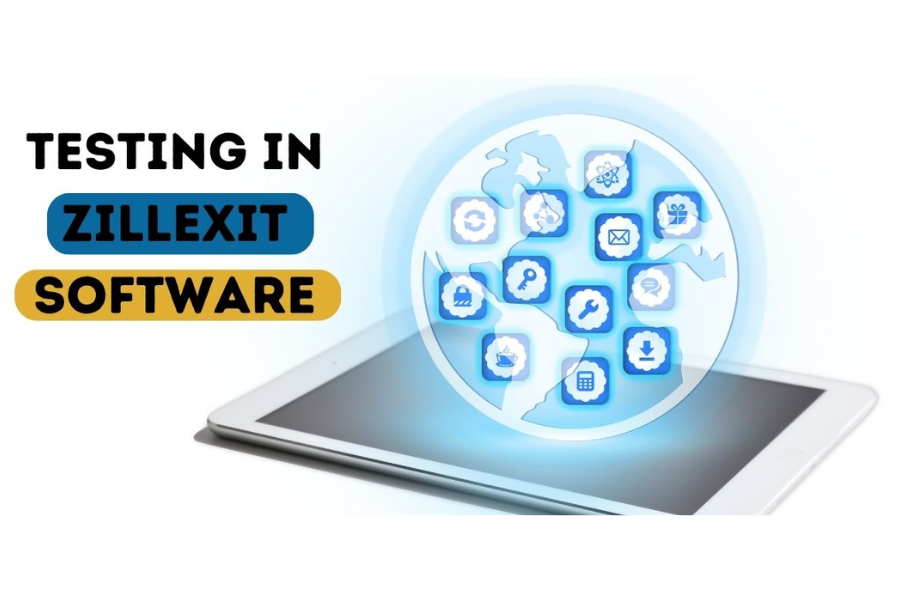Zillexit software empowers developers to build and manage decentralized applications on the Zilliqa blockchain, known for its high throughput and sharding capabilities. Given its importance and the sensitive information it handles, it’s crucial to ensure its secure storage. This guide explores various methods to protect Zillexit software from unauthorized access, data corruption, and other risks, while maintaining accessibility for authorized users.
Securing Zillexit Software from Unauthorized Access
Use Strong Passwords
Characteristics: Ensure that all Zillexit software files are protected with robust, unique passwords. Strong passwords should be at least 12 characters long and include a combination of uppercase and lowercase letters, numbers, and special symbols. Avoid easily guessable passwords and consider using a password manager to generate and store complex passwords securely.
Encrypt Your Files
Encryption Tools: Protect Zillexit software files by storing them on encrypted drives. For Windows, use BitLocker; for macOS, use FileVault; and for cross-platform needs, consider VeraCrypt. This safeguards data if the physical device is lost or stolen, ensuring that without the encryption key, the data remains inaccessible.
Use Hardware Wallets for Private Keys
Cold Storage: Store Zillexit private keys on hardware wallets like Trezor or Ledger. These devices keep keys offline, mitigating risks from online threats. Always keep backup recovery phrases in a secure location to avoid losing access if the hardware wallet is damaged or lost.
Enable Two-Factor Authentication (2FA)
Additional Security: Add an extra layer of security by enabling 2FA on all accounts associated with Zillexit. This requires both a password and a time-sensitive code from an authenticator app or a hardware key, protecting against unauthorized access even if passwords are compromised.
Protecting Zillexit Software from Data Corruption
Implement Version Control
Code Management: Use version control systems like Git and GitHub to manage code changes and track versions. This helps in rolling back to previous versions in case of bugs or issues, ensuring a stable development environment.
Automate Backups
Backup Solutions: Regularly back up Zillexit software and databases using automated solutions. Services like AWS Backup, Dropbox, or Backblaze can be configured to perform regula backups, ensuring that data is not lost due to unexpected issues.
Utilize Redundancy and Mirroring
Disaster Recovery: Mirror critical Zillexit components across geographically distributed servers to enhance uptime and disaster recovery. This helps in minimizing downtime and recovering quickly from catastrophic events.
Verify Checksums
Integrity Checks: Regularly verify checksums of Zillexit software installers to ensure that files have not been tampered with. Comparing checksums with published values helps in maintaining data integrity.
Backup Private Keys
Key Security: Ensure that private keys are backed up securely. Use encrypted backups and store them in multiple secure locations. Consider using multisig wallets for additional protection against key loss.
Document Procedures
Operational Guides: Maintain detailed documentation of procedures for accesscontrol, account recovery, and disaster recovery. This helps in managing the system effectively and ensures continuity in case key personnel are unavailable.
Test Restore Processes
Verify Backups: Regularly test restore processes by restoring backups to a sandbox environment. This confirms that backups are functional and can be restored successfully in a real recovery scenario.
Implement Air-Gapped Backups
Offline Backups: Keep some backups offline and disconnected from the internet to protect against ransomware and other online threats. Air-gapped backups act as a final line of defense.
Ensuring Accessibility for Authorized Users
Use a Password Manager
Secure Sharing: For team environments, use a password manager to securely share passwords and credentials. This helps in managing access based on roles and responsibilities, and facilitates secure password rotation.
Implement Multi-Signature Wallets
Transaction Security: Use multi-signature (multisig) wallets to require multiple approvals for transactions. This reduces the risk of unauthorized access and ensures that control is distributed among multiple trusted individuals.
Store Keys in a Vault
Hardened Security: For enterprise setups, use Hardware Security Modules (HSMs) or key vault solutions like Azure Key Vault. These provide advanced protection and strict access controls for sensitive cryptographic keys.
Backup Mnemonic Phrases
Mnemonic Security: Securely back up mnemonic phrases used to restore wallets or accounts. Store these phrases in multiple durable formats and locations, treating them with the same level of security as private keys.
Document Operational Procedures
Guidance and Training: Ensure that all operational and recovery procedures are documented and kept up-to-date. This facilitates smooth administration and recovery processes even when key staff are unavailable.
Conclusion
To safely store Zillexit software, it’s essential to implement robust security measures, including strong passwords, encryption, hardware wallets, and 2FA. Additionally, protect against data corruption through version control, automated backups, redundancy, and integrity checks. Ensuring accessibility for authorized users through password managers, multisig wallets, and secure key storage is also crucial. By adopting these practices, both individuals and organizations can effectively safeguard Zillexit software while maintaining secure and reliable access.
Find detailed insights and updates at Crock knot.





Leave a Reply